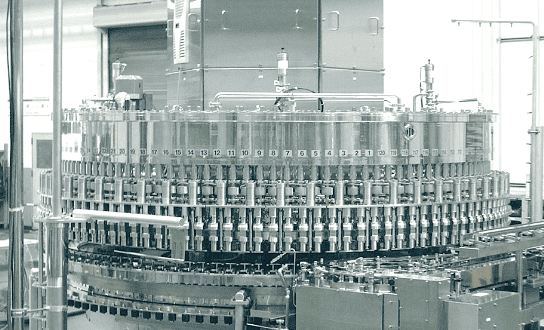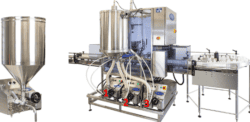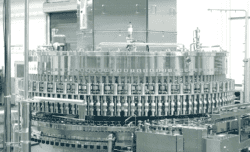Filling machines are used in production to deliver the correctly measured volume of liquid into the appropriate receptacle, whether that be a pouch, bottle or similar. They are popular in the food and beverage industry, as well as the beauty and cosmetics industry and the chemical and household industry.
Any type of filling equipment must have an up-to-date risk assessment recorded and saved to ensure that it can be operated, adjusted, and maintained safely in accordance with law and legislation.
Types
If space is at a premium and production volumes low, then a tabletop filler could provide the ideal solution. They require the operator to place the bottle, activate the fill (usually via a finger or foot switch) and then remove the bottle. Additional fill heads can be installed if production needs to increase.
Semi-automatic fillers allow for more automation. Whilst an operator will still be required to place a bottle, activate the fill, and remove the bottle, these machines are capable of upgrades which allow for less interaction. These are full-frame machines and are capable of upgrades such as an indexing system.
A company with higher production demands would benefit from a fully automated filling machine. They include sensors to detect when the fill is complete and then move the bottle along the production line to capping and labelling equipment. Operators are still required but this is for minimal manual changeover. Operators can often do this via a central interface with knobs, buttons, or touch-screen technology.
Liquid filling services
Seeking installation and support from a specialist liquid filling services provider such as wyepak.co.uk/filling-packing-services/liquid-filling has many advantages. The services they offer include new project start-up, technical support and emergency cover. Liquid filling services often offer greater flexibility to your production scheme, since equipment can be adapted and upgraded in accordance with production needs.
Regardless of the filling machine that is best suited to you, a high level of customisation is often available across the 3 most common variants. Machines can be custom-built to meet specific process requirements, in terms of different bottle sizes and differing liquid viscosities.



